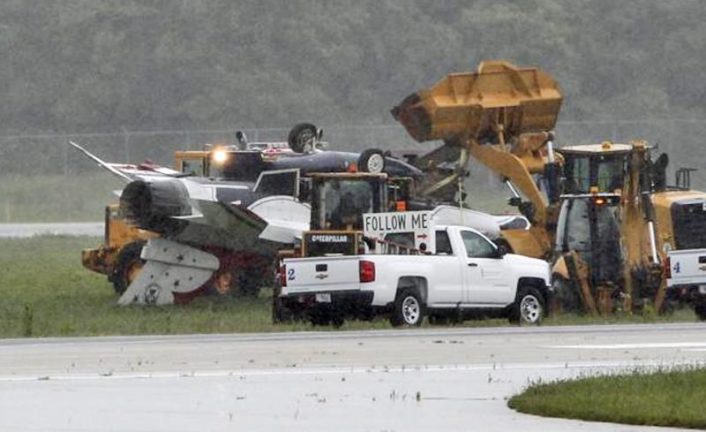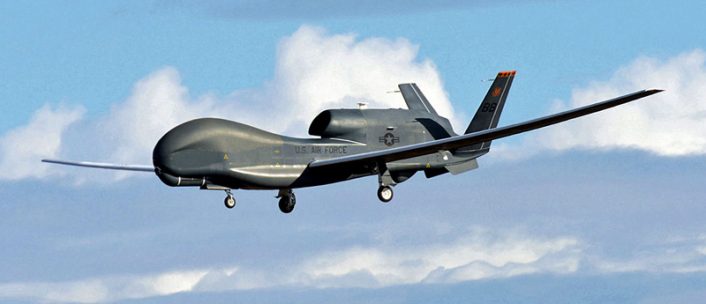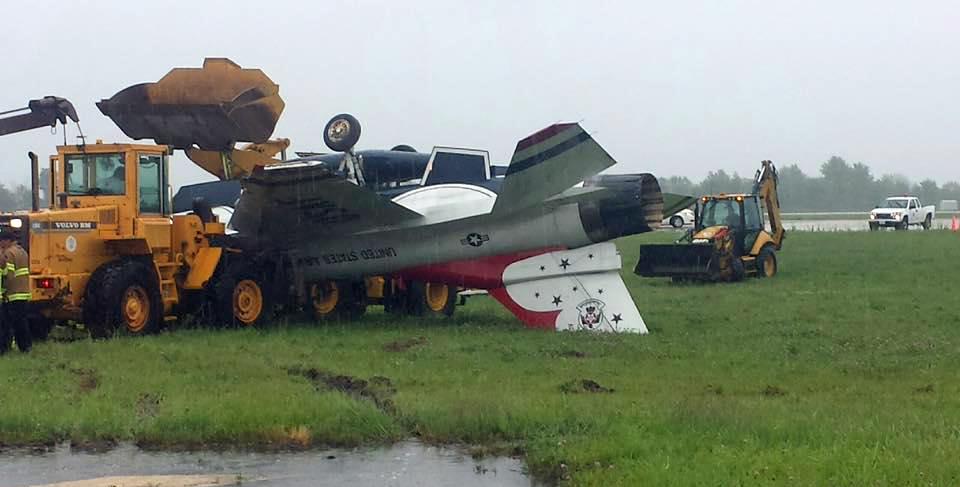RQ-4 Long Range RPV From Beale AFB Crashes in Mountains, Thunderbirds F-16D Crashes In Runway Rollover.
In two separate, unrelated incidents a U.S. Air Force F-16D Fighting Falcon of the Thunderbirds flight demonstration team flipped over after landing at Dayton International Airport in Ohio and a U.S. Air Force RQ-4 Global Hawk long range surveillance drone has crashed on a ferry mission from Edwards Air Force Base back to its home base at Beale AFB in California.
The Thunderbird F-16D involved in the crash is a two-seat variant often used for orientation and public relations flights with two people on board, a Thunderbird pilot and guest of the team.
There is a report that the second person on the Thunderbird F-16D may have been an enlisted Thunderbird maintenance team member. Enlisted members of the Thunderbird team are sometimes flown for orientation and media purposes. Reports from the crash scene suggest one of the persons in the aircraft was waving to emergency personnel from inside the aircraft. Because the aircraft came to rest upside down the canopy could not immediately be opened. Rescue personnel were on scene immediately following the accident.
In an official release on the U.S. Air Force Thunderbirds’ Facebook page, the team’s social media liaison wrote, “The United States Air Force Thunderbirds were conducting a single-ship familiarization flight on Friday June 23, 2017. Upon landing there was a mishap at the Dayton International Airport with an F-16D Fighting Falcon at approximately 12:20 p.m. Emergency services are on the scene. We will provide more information as it becomes available.”
Although no official cause of the accident has been released, weather may have been a factor. As of 1:00 p.m. local time weather websites for the area reported thunderstorms with heavy rain and lightning with wind gusts up to 23 M.P.H.

On Jun. 2, 2016, a U.S. Air Force Thunderbirds F-16 crashed shortly after the demo team had performed a flyover at the annual Air Force graduation ceremony in Colorado Springs. The pilot managed to eject before the aircraft crash landed in a field not far from Peterson AFB, Colorado. The cause of the F-16CM #6 crash was found in “a throttle trigger malfunction and inadvertent throttle rotation.”
In an unrelated incident a U.S. Air Force RQ-4 Global Hawk long range surveillance drone had crashed on a ferry mission from Edwards Air Force Base back to its home base at Beale AFB in California on Jun. 21. Media reports said the remotely piloted vehicle was from the 12th Reconnaissance Squadron at Beale and was on a routine flight from Edwards Air Force Base. The aircraft went down near Mt. Whitney in the Sierra Nevada mountains at approximately 1:45 p.m. PST on Wednesday, June 21.
The Northrop Grumman RQ-4 Global Hawk is a key strategic intelligence, surveillance and reconnaissance asset for the U.S. Air Force. It is a long range, long duration surveillance asset. The RQ-4 uses synthetic aperture radar to “see through” overcast and nighttime conditions to provide precise imagery of terrain features. A series of infra-red and long-range electro-optical/infrared (EO/IR) sensors provide imagery and spectrum analysis of targets from the RQ-4. Some analysts compare the mission and performance of the unmanned RQ-4 Global Hawk to the manned TR-2/U-2 long range, high altitude reconnaissance aircraft. There may be as few as four of the RQ-4s operating from Beale AFB.














